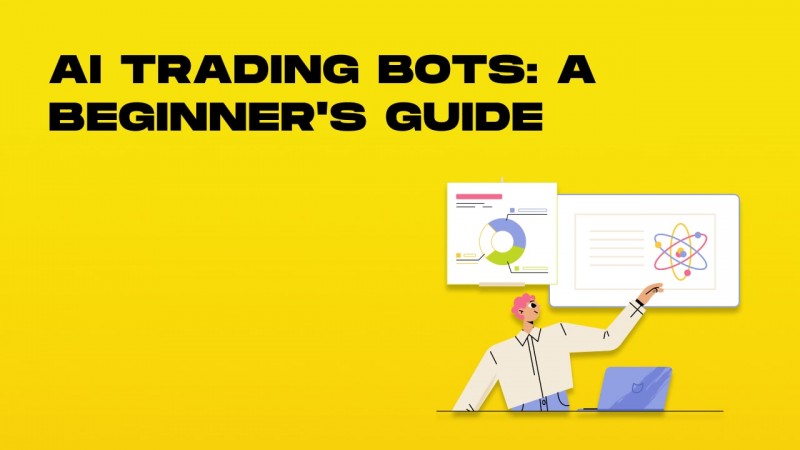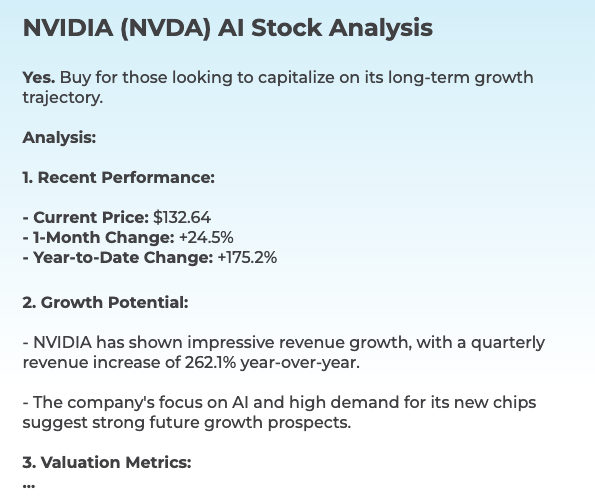20 Good Tips For Deciding On AI Stock Analysis Sites
20 Good Tips For Deciding On AI Stock Analysis Sites
Blog Article
Top 10 Tips To Assess Market Coverage By Ai Trading Platforms And Stock Forecasting
Market coverage is one of the most important factors to take into consideration when looking at AI-based trading platforms. This determines how many market and asset types are accessible. A platform that has comprehensive market coverage allows investors to diversify their portfolios and discover global trading opportunities and adapt to different strategies. Here are 10 suggestions to help you analyze the market coverage offered by these platforms.
1. Evaluate Supported Asset Classes
Stocks - Check that the platform is able to include the major stock markets (e.g. NYSE NASDAQ LSE HKEX) in addition to includes small-caps, mid-caps and large-caps.
ETFs - See the platform you use supports an extensive range of ETFs that provide exposure in a number of various sectors, regions, or themes.
Futures and options. See if your platform offers derivatives including options, futures or other instruments leveraged.
Forex and commodities: Find out whether your website offers forex and commodities, as well as precious metals and energy commodities.
Cryptocurrencies: Make sure the platform supports major cryptocurrencies (e.g., Bitcoin, Ethereum) and altcoins.
2. Verify coverage in your area
Global markets. Your platform should cover the major global market that includes North America Europe Asia-Pacific and emerging markets.
Focus on regional markets: Find out if the platform is focused on particular markets or regions that align with your goals in trading.
Local exchanges: Make sure you know whether the platform is compatible with regional or local exchanges that relate to your specific location or plan.
3. Compare Real-Time and. Delayed data
Real-time data - Ensure that your platform is able to provide real-time market information that will assist you in making timely decisions, particularly for active traders.
Delayed data - Find out if delayed data is available for free or is available at a lower cost. This could be enough for investors who are looking to invest for the long run.
Data latency. Check if the platform is able to minimize the time it takes to process real-time feeds, especially for high-frequency trading.
4. Evaluate Historical Data Availability
Historical depth: Make sure whether the platform has ample historical data (e.g. more than 10 years of data) for backtesting and analysis.
Granularity: Find out if the data contains intraday, daily weekly, monthly, and daily the granularity.
Corporate actions: Verify that the data from the past takes into account stock splits (if appropriate) dividends, stock splits and any other corporate action.
5. Review market depth and order details
Level 2 data: Ensure that the platform offers Level 2 information (order book depth) to facilitate price discovery and execution.
Bid-ask Spreads: Ensure that the platform shows real-time spreads between bid and ask to ensure accurate pricing.
Volume data: Check if your platform provides specific volume data for analyzing liquidity and market activity.
6. Examine the extent of coverage for Indices and Sectors
Major indices: Ensure that your platform can support major indices like the S&P 500 (e.g. NASDAQ 100 or FTSE 100), for benchmarking using indexes.
Information from specific industries to perform a targeted analysis, you should verify whether the platform contains information for specific industries (e.g. health care, technology, etc.).
Custom-designed indices. Check if the platform is capable of creating and keeping track of custom indices that meet your needs.
7. Examine the integration of News and Sentiment
News feeds - Ensure that the platform is integrating live news feeds with market-moving stories from reputable (e.g. Bloomberg or Reuters) sources.
Sentiment analysis: See if the platform includes tools for analyzing sentiment based on social media, news or other data sources.
Trades driven by events: Check the platform's capabilities to support trading based on events (e.g. reports on economic data, earnings announcements).
8. Check for Multi-Market Trading Capabilities
Trading in cross-markets: The system will allow trading on different markets or asset classes using a single user interface.
Conversion of currency: Make sure your platform supports multiple-currency trading and automatic currency conversion.
Support for time zones: Check that your platform supports the ability to trade in different time zones.
9. Evaluation of alternative data sources
Alternative data: For unique insights, confirm if your platform uses alternative data (e.g. satellite imagery, web traffic or credit card transactions).
ESG data. Verify whether the platform contains environmental, socio-economic, and governance data for socially accountable investing.
Macroeconomic data: Ensure that the platform provides macroeconomic indicators (e.g. inflation, GDP, interest rates) for analysis of fundamentals.
Review customer feedback and reputation of the market
User reviews: Research feedback from users to determine the platform's market coverage and the reliability.
The reputation of the market Check if there are any awards or experts who recognize the platform for its coverage of the market.
Case studies and testimonials: These will highlight the platform's performance in specific asset classes or markets.
Bonus Tips
Trial period - You can use the free demo or trial to test the market coverage and data coverage.
API access: Check if the platform's API allows access to market data in a programmatic manner for customised analysis.
Customer Support: Ensure that the platform is able provide support for any issues related to data or market issues.
Follow these tips to evaluate the market coverage offered by AI stock trading platforms. Choose a platform with access to the market, data, and tools you require to be successful in trading. Comprehensive market coverage enables you to diversify your portfolio, look for new opportunities and be able to adapt to market conditions that change. Check out the most popular get more info on AI stock market for website advice including ai chart analysis, stock ai, ai investing platform, ai investing app, ai chart analysis, ai investing app, best ai trading software, ai for investment, ai trading, AI stock market and more.
Top 10 Tips On Assessing The Risk Management Of AI stock Prediction And Analysis Of Trading Platforms
A trading platform that utilizes AI to forecast or analyze stocks must have a solid risk management system. This can protect your investment capital and reduce any possible losses. A platform that has robust tools for managing risk will assist you in navigating the volatile market and enable you to make informed decisions. Here are 10 top tips to help you assess the risk management capabilities of these platforms.
1. Evaluate Stop-Loss and Take-Profit Features
A level that is customizable: You must be able customize the levels of take-profit and stop-loss for specific strategies and trades.
Check the platform to see whether it is compatible with trailing stopped, which will adjust automatically as the market shifts in your direction.
Make sure your platform allows you to place stop-loss orders that ensure the close of your trade at the price stipulated, even on volatile markets.
2. Useful Tools for Assessing Position Size
Fixed amount. Be sure to have the option to define your positions' sizes by the fixed dollar amount.
Percentage portfolio: Find out if the risk is manageable in a proportional way by setting your positions as a per centage of your overall portfolio.
Risk-reward Ratio: Ensure that the platform permits setting risk-reward levels for each individual.
3. Check for Diversification Support
Multi-asset Trading to diversify your portfolio of investments, be sure that the platform you choose supports trading in multiple asset classes.
Sector allocation: Ensure that the platform has tools to monitor the exposure of different sectors.
Diversification of geographical risk: Find out if the platform you trade on has international markets available in order to spread risk across different geographical areas.
4. Assess the Margin and Leverage Controls
Margin requirements: Make sure the platform clearly states the requirements for margin for trading leveraged.
Leverage limits: Check whether the platform permits you to set limits on leverage to limit the risk of exposure.
Margin calls: Ensure that you receive timely notifications from the platform in order to ensure that your account is not liquidated.
5. Assessment Risk Analytics and reporting
Risk metrics - Ensure that your platform includes crucial risk metrics, such as the Sharpe ratio (or Value at Risk (VaR)), or drawdown (or value of portfolio).
Scenario assessment: Find out whether you can simulate various market scenarios on the platform in order to determine potential risks.
Performance reports: Ensure that the platform offers you comprehensive reports on performance, as well as returns that are adjusted for risk.
6. Check for Real-Time Risk Monitoring
Monitoring your portfolio. Be sure your platform can track in real-time the risk associated with your portfolio.
Alerts: Check if you receive real-time alerts for events that are associated with risk (e.g. stop-loss triggers, margin breaches).
Take a look at the dashboards for risk. If you want to see a complete picture of your risks, be sure that they're configurable.
7. Evaluation of Stress Testing and Backtesting
Stress testing: Make sure whether the platform allows you to stress test your strategies or portfolios during extremely difficult market conditions.
Backtesting - Check to see if your platform allows you to test strategies back using historical information. This is a fantastic method to gauge the risk and evaluate the effectiveness of your strategy.
Monte Carlo Simulators: Verify whether the platform uses Monte Carlo models to model possible outcomes and assess risks.
8. Risk Management Regulations - Assess Compliance
Check for regulatory compliance: Verify that the platform's compliance with relevant Risk Management Regulations (e.g. MiFID II for Europe, Reg T for the U.S.).
Best execution: Verify whether the platform is following the top execution method, which guarantees that trades are carried out at the lowest cost to avoid any chance of slippage.
Transparency: Make sure that the platform provides clear and transparent disclosures about the risks.
9. Check for user-controlled risk parameters
Customized risk rules: Make sure whether your platform lets you set up your own risk management rules (e.g. maximum daily loss or the maximum size of a position).
Automated risk control: Determine whether the platform can automatically implement rules for risk management based on your defined parameters.
Manual overrides Determine for the possibility of manually overriding the automated risk control in an emergency.
Review of User Feedback and Case Studies
User feedback: Review the opinions of users to assess the platform's capability to take care of risk.
Case studies: Look for cases studies or testimonials that highlight the platform's risk management capabilities.
Forums for community members Find out if there is a vibrant community of traders who share their tips and strategies to manage risk.
Bonus Tips
Trial period: Make use of a no-cost demo or trial to experience the risk management capabilities of the platform in realistic scenarios.
Support for customers: Ensure that the platform can provide robust support in relation to queries or concerns related to the management of risk.
Educational resources - Find out whether the platform provides instructional resources and videos on best practices in risk management.
These suggestions will assist you to evaluate the risk management capabilities of AI analysis and stock prediction platforms. In this way, you'll be able to select a platform that protects your capital and minimizes potential losses. Robust risk management tools are vital to navigate the turbulent markets and achieving trading success. Have a look at the top rated ai for trading stocks blog for site recommendations including AI stock prediction, best stock prediction website, invest ai, free ai tool for stock market india, stock predictor, stocks ai, AI stock price prediction, AI stock analysis, ai in stock market, stocks ai and more.